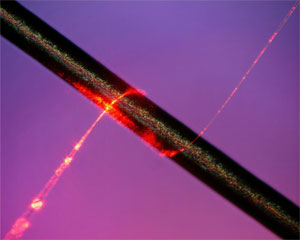From the days of the ENIAC (the first computer) to the Cray Titan (the fastest computer on earth), the computers have come a long way, be in terms of speed, size, or power consumption.
Replacing the ‘human computers’, ENIAC worked at a speed of 5000 calculations per second, a giant feat in its time in 1946. Computing has seen huge improvements in speed, with the computers of today capable of a whopping 2,000,000,000 calculations per second (your 2 GHz computer)!
That’s not even counting the Cray Titan which computes at a speed of 20,000 trillion (2 followed by 16 zeroes) calculations per second.


So, I was wondering how much faster can we make it? What is the ultimate speed that a computer can achieve? Is there any such limiting, fastest speed? How fast can we make the electrons whiz by in the computer circuits?
The answer came, like someone flipped on a bulb in my head. Exactly! A bulb, that shines its light upon everything! Light! The fastest thing in the universe!
Why don’t we use light, as the element that we process, instead of electric current? Instead of using electricity in the computer circuitry, we could replace it with light wherever possible, to speed up things. Light can be used to transfer data between the various components of the computer (through the system bus, PCI, etc), can be used to store data (holographic data storage), and process it optically.
Fibers could be used instead of metal wires because signals transmit in them with less loss and are also immune to electromagnetic interference. Each fiber can carry many independent channels, each using a different wavelength of light, using wavelength-division multiplexing (WDM).
Current technologies have been able to create optical fibers of diameter to under 100 nm. That can be used in scaling down the size of ‘conductor’ so as to squeeze in more space. With


